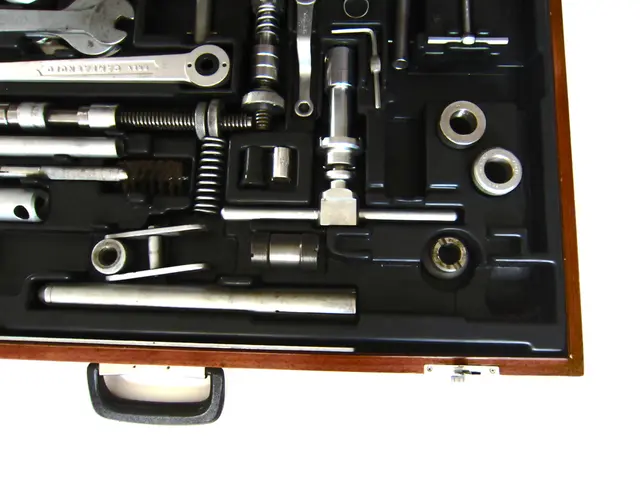Atomic Decay Clock's Accuracy Falls Short in 2025 One Hertz Challenge, Remaining Impressively Accurate Yet Inexact
In a groundbreaking development, a researcher has created a unique timepiece that operates on the principles of radioactive decay, setting it apart from traditional atomic clocks. This innovative device, known as a probabilistic radiometric timepiece, has been in continuous operation for over a year.
The researcher, whose identity remains undisclosed, decided to focus on the particles emitted during radioactive decay as a subject of study. To achieve this, they employed a microcontroller to count clicks from a Geiger-Mueller tube, a device that detects and measures ionizing radiation.
Unlike atomic clocks, which measure time based on the hyperfine transition states of atoms, this timepiece operates by counting the emissions during radioactive decay. However, the accuracy of this clock compared to actual time remains unspecified in the provided search results.
Atomic clocks have been maintaining the global schedule for decades, with each generation becoming more accurate. The spacing between ticks in an atomic clock is consistent, resulting in high accuracy and precision. In comparison, the probabilistic radiometric timepiece, while inaccurate in the short term, smooths out over time and provides a meaningful reading.
After one year of continuous operation, the counter was off by about 26 minutes, or 4.4 seconds per day. This inaccuracy is significant compared to traditional Rubidium atomic clocks or NIST's Strontium clock. Nevertheless, the system has a status page for monitoring its performance.
Quantifying small changes in the energy output of radioactive materials with short half-lives over seconds or minutes is impractical. Most commonly available radioactive materials have long half-lives, typically decades or centuries. This limitation could be a challenge for the researcher in refining the accuracy of the probabilistic radiometric timepiece.
Despite its inaccuracies, the probabilistic radiometric timepiece has a distinct style, featuring a clock face with hands instead of an LCD display. This timepiece is an entry into the 2025 One Hertz Challenge, a competition that encourages the development of innovative timekeeping technologies.
In conclusion, the probabilistic radiometric timepiece represents a significant step towards creating a timepiece that operates on the principles of radioactive decay. While it may not rival the accuracy of traditional atomic clocks, it offers a unique approach to measuring time and presents promising opportunities for future research and development.
Read also:
- AI Inspection Company, Zeitview, Secures $60 Million Funding for Expansion
- "Worldwide Initiative Introduces Scheme to Boost Eco-friendly Entrepreneurship in Underdeveloped Regions Worldwide"
- Electric public transportation, manufactured in Latvia, has begun functioning in Vilnius.
- Toyota's Q1 Financial Shift: Reason Behind Profit Dip Yet Hybrid Growth, and Rapid Advancement Towards Net Zero Emissions Goals








